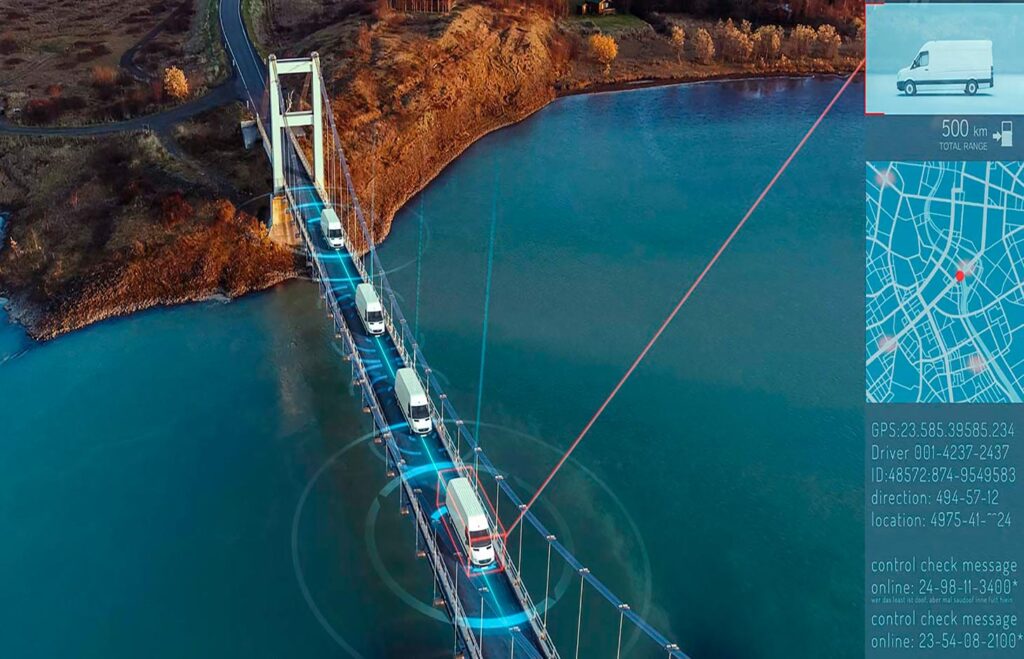Representing the merging of two world-changing technologies—GPS and the Internet of Things (IoT)—telematics is an evolutionary asset to the transportation industry.
Big data combines with global positioning capabilities to produce a fluid stream of information with major implications for route efficiency, driver safety, vehicle upkeep, and of course, the bottom line.
Proper use of telematics can quantifiably improve the business process and directly translate to lower costs and higher margins for companies that manage fleets.
The extent to which telematics aligns with fleet efficiency and cost management may prove surprising to the un-initiated.
Many see a 13% average reduction in fuel costs, a 17% reduction in the cost of labor, and a 25% decrease in accidents. These are significant savings that can have a large impact on overall business operations.
Here are five ways to maximize the utility of telematics and IoT innovation as it relates to fleet cost management.
1. Route optimization
One of the clearest ways telematics enhances fleet management is through the robust range of possibilities it lends to route planning and optimization. Fleet managers can use IoT data to evaluate route efficiency, not just in terms of sheer mileage, but also based on variables previously beyond the reach of consideration.
With the data provided by telematics, fleet managers can get real-time information more pertinent to business activity than just route and distance travelled. This can include:
- asset location
- idling trends
- fuel consumption, and
- even traffic, weather, and road conditions.
For example, with this data at hand, a fleet manager could determine that while Path A has historically been the quickest route to travel, Path B has become the better option as it benefits from higher speed limits, smoother driving conditions, and less traffic congestion.
This heightened understanding of what happens on the road saves transportation companies on the cost of fuel and further bolsters revenue by enhancing efficiency.
Data can also indicate that a route appearing innocuous on paper may be a needless issue for fuel economy due to consistent inclines, excessive stop signs and traffic lights, windy conditions, etc.
Consequently, the more telematics is used in route planning, the better the information becomes for the purposes of route efficiency.
2. Preventative vehicle maintenance
The overwhelming amount of data-points and remote diagnostic capabilities of telematics technology also does well to enhance vehicle upkeep. In addition to documenting everything from the handling habits of drivers to the weather conditions of particular trips, telematics can also record hyper-precise information on the status of individual vehicle components.
This might include information on:
- cranking voltages
- coolant temperatures
- tire rotations
- fuel levels, and more.
Like a doctor listening into a patient’s heartbeat, telematics constantly monitors the vehicle’s vital signs, identifying problems before they’d otherwise have been noticed.
The tracking and monitoring capabilities enabled through telematics can also ensure proper fleet compliance, with:
- electronic logging devices (ELDs)
- IFTA fuel tracking
- CO2 emissions output, and more.
3. Reduced insurance cost
Insurance costs have always been negotiable on the grounds of performance. A driver with no history of traffic violations or accidents tends to be less expensive to insure than one with a problematic record.
However, even assuming a pristine driving history, insurance costs are substantial. Telematics technology can provide additional bargaining leverage for fleet-based companies seeking lower rates.
Some transportation companies estimate telematics has helped them to save up to 25% on their driver insurance—easily equating to thousands of dollars annually.
Through the detailed data this technology provides, transportation businesses can present precise logs of what their drivers are doing on the road. And in demonstrating adherence to speed limits and other traffic regulations, the door for deeper discounts is opened.
It’s also worth noting fleet managers can use these same data points to mitigate insurance liabilities. By monitoring driver performance in real-time—and in some cases with live video proof—a fleet manager can:
- praise good habits
- critique the bad
- sharply reduce the risk of costly mistakes, and
- ensure driver and cargo safety in the process.
Video telematics is a particularly interesting way to monitor driving habits. Through this service, road-facing cameras can constantly stream footage, saving data only when the AI programming detects a violation.
This feature boosts driver accountability and supplies transportation businesses with hard evidence in the event of a liability claim.
4. Improved cash flow management
Telematics also has significant application in cash flow management.
Transportation businesses get a very clear idea of the status of all of their assets. Through IoT sensor and device monitoring, fleet managers can review historical and current data points to project their fleet maintenance requirements.
Consequently, it becomes much easier to anticipate how much capital should be left in reserve for service expenses, “freeing up” remaining funds for expansion, and other business interests.
As already evidenced, telematics technology also simply ensures there’s more cash flow to go around. By providing significant savings on expenses like insurance and fuel economy, businesses can count on steadily higher profit margins on a month-to-month basis.
This consistency stabilizes accounting concerns and further enhances a business’s ability to focus on growth and expansion.
5. Increased monetization opportunities through flexible IoT billing
Lastly—but not least-ly, IoT billing solutions provide transportation companies the opportunity to implement flexible, usage based pricing strategies.
Usage based pricing models have traditionally been reserved for industries such as telecommunications, utilities, etc. And billing based on meter-reading has primarily been an opportunity afforded only to larger companies with the money, infrastructure, and staff-power to sustain the practice.
However, the proliferation of affordable IoT sensors democratizes this approach, making it easy and affordable to remotely monitor and track real-time usage-based data.
By implementing an adaptive subscription billing software, fleet-based businesses can automate the entire process and find new ways to monetize their services. Using IoT sensors, a fleet-based business might be able to redefine the way it monetizes its services.
For example, a hauling company might charge customers based on tracked mileage. It could even offer its services to regular customers at a base recurring fee and include mileage overage charges for increased service needs.
Fleet managers could also factor fluctuating fuel costs into their pricing strategies to ensure their costs are covered.
On the business end, profits grow as a result of the diversification of pricing and telematics billing options. And for customers, usage-based pricing structures are also likely to resonate as transparent and fair. This mutually beneficial arrangement can have significant implications for profit growth.
The monetization opportunities afforded by adaptive billing around usage can further be a competitive differentiator for the early adopters of these pricing strategies in the telematics space.
The telematics advantage
The utility of telematics is constantly evolving, and the points above represent only a sampling of the boundless value this technology can provide to fleet-based businesses.
Indeed, the growth forecast for the telematics market is enormous. The industry is expected to be valued at $750B by 2030.
A substantial percentage of businesses see a return on their investment within six months of integrating telematics technology.
Of course, that’s just the quantifiable data. It’s impossible to account for how much can be saved—both monetarily and at a human level—by reducing accidents and improving operational safety.
Right now, we see telematics enhancing efficiency, improving economy, and increasing opportunities on many levels for transportation companies across the globe.
And as the technology continues to advance, fleet-based businesses that lag in implementing these new technological enhancements are sure to be disadvantaged against the many who have already taken the lead.








